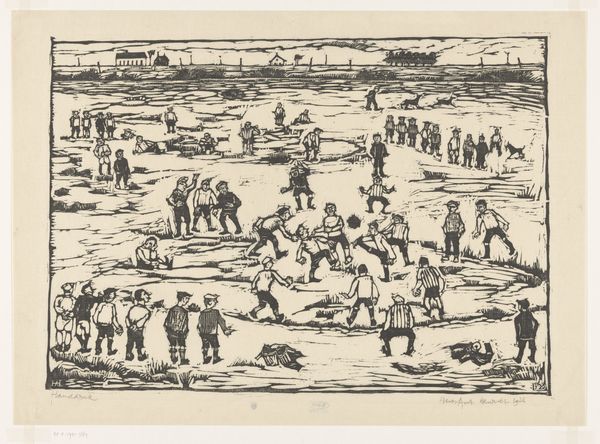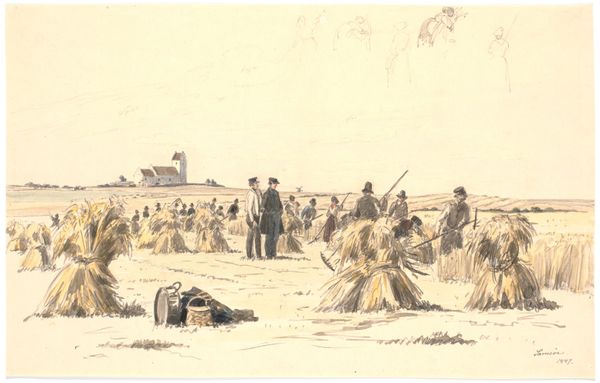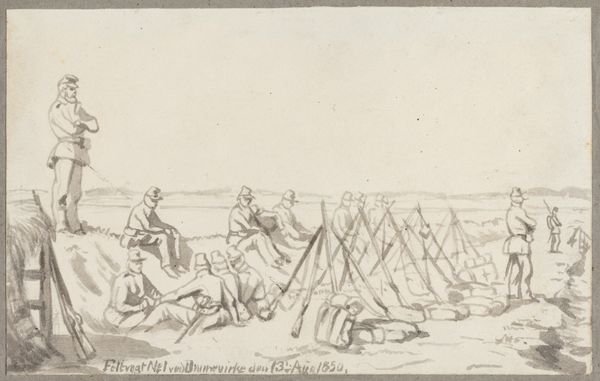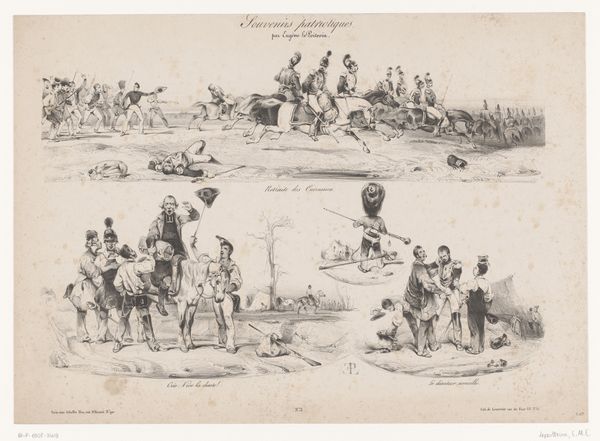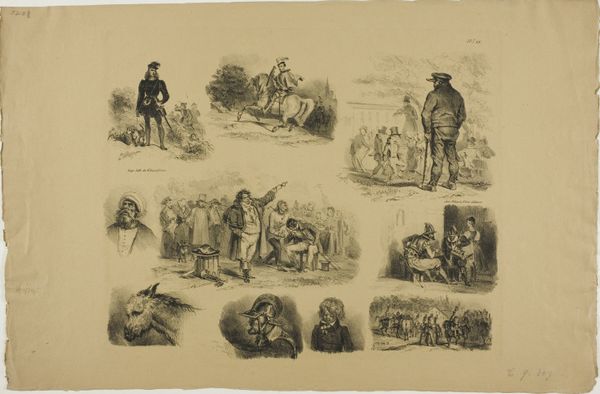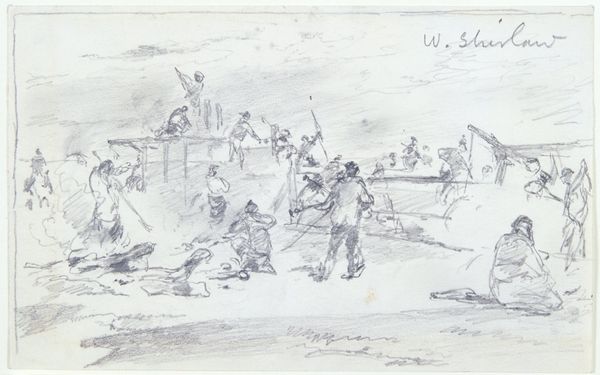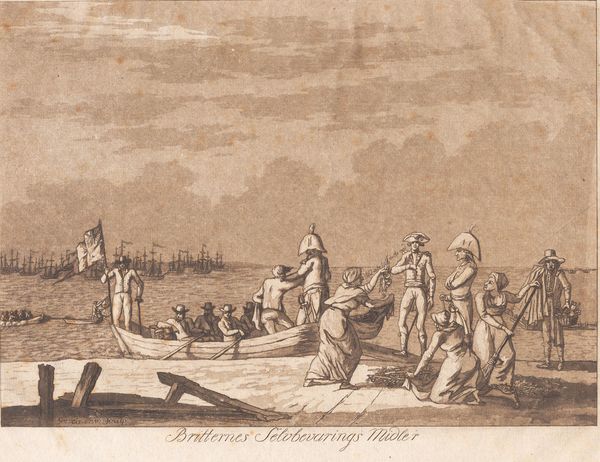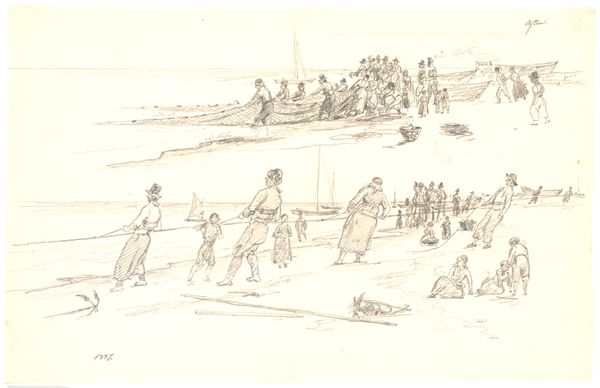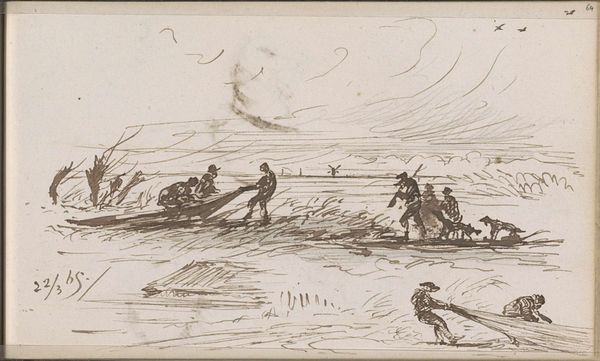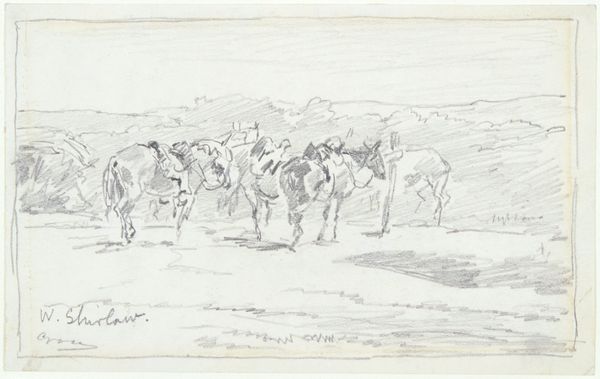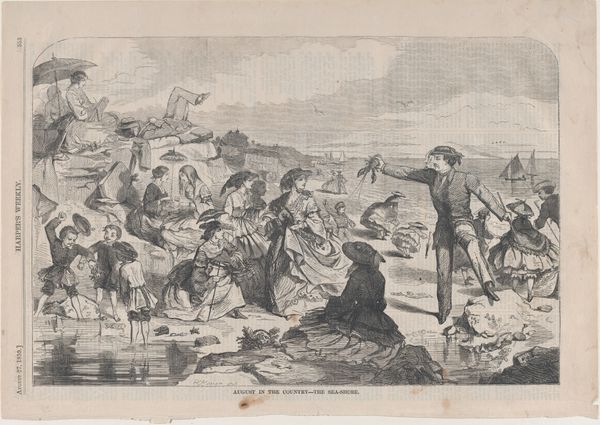
Høstarbejdere på marken. I baggrunden møller og havet 1847
0:00
0:00
drawing, plein-air, pen
#
drawing
#
plein-air
#
landscape
#
pen-ink sketch
#
pen
#
genre-painting
#
northern-renaissance
#
realism
Dimensions: 225 mm (height) x 366 mm (width) (bladmaal)
Curator: This is Martinus Rørbye's "Harvesters in the Field. In the Background, Mills and the Sea," a pen-and-ink sketch completed in 1847. Editor: It’s amazing how much atmosphere he gets with so little. The stooped figures, the endless field – it speaks of toil, of a really physical relationship with the land. Curator: Rørbye, you know, was quite a traveler, a keen observer of everyday life. This piece, even as a sketch, resonates with the burgeoning realist movement, turning its gaze toward the working class. What do you make of the aerial sketches? Editor: Well, that immediately makes me consider it as a field study. To understand his methods. There’s something incredibly grounded about this – you can almost feel the weight of the sheaves of wheat, the rough texture of their clothing. And the labor involved is palpable. These weren't leisurely field trips; there’s toil and production captured here. Curator: Exactly. This wasn't simply aesthetic observation. The social history of 19th-century Denmark is etched in these lines. We must consider that even images of common laborers have an implied political stance. Editor: I am interested by how his rapid strokes really convey a sense of labor; and you wonder about the social cost implied and consumed within it – for all of us that are living 150 years into the future from this labor! I am stuck between an interest in technique versus social impact. Curator: Both absolutely relevant avenues for observation here. What also strikes me is the inherent value in simply capturing the essence of the moment and reflecting a growing sense of self awareness about who does work in Denmark. The common folk in Denmark is finally represented and rendered faithfully! Editor: I leave here now feeling newly appreciative of Rørbye's draftsmanship but also conscious of all who have labored over what we all consume. I suppose one would walk away feeling this picture means much. Curator: I agree and believe that it makes the invisible visible in terms of Danish agrarian society, both socially and physically. Hopefully, this inspires thought and social consciousness, making this a meaningful experience to carry forward in our world.
Comments
No comments
Be the first to comment and join the conversation on the ultimate creative platform.

